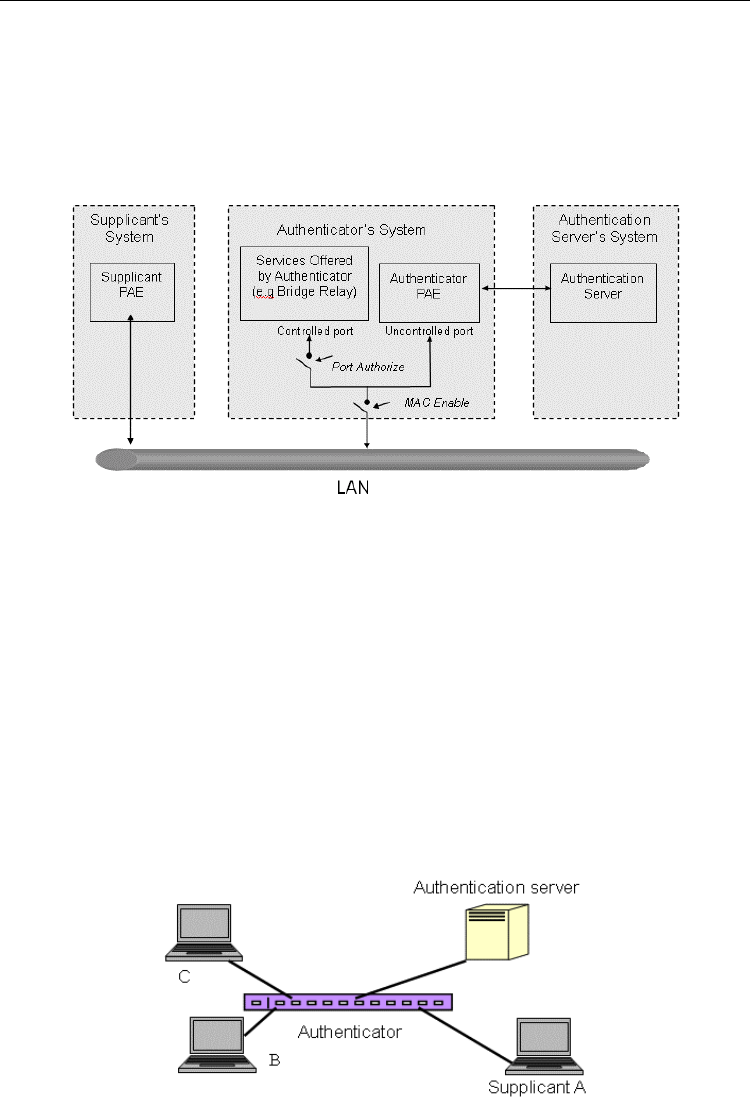
2
65
While in the authentication process, the message packets, encapsulated
by Extensible Authentication Protocol over LAN (EAPOL), are exchanged
between an authenticator PAE and a supplicant PAE. The Authenticator
exchanges the message to authentication server using EAP
encapsulation. Before successfully authenticating, the supplicant can
only touch the authenticator to perform authentication message
exchange or access the network from the uncontrolled port.
Fig. 4-13
In the Fig. 4-14, this is the typical configuration, a single supplicant, an
authenticator and an authentication server. B and C is in the internal network, D is
Authentication server running RADIUS, switch at the central location acts
Authenticator connecting to PC A and A is a PC outside the controlled port, running
Supplicant PAE. In this case, PC A wants to access the services on device B and C,
first, it must exchange the authentication message with the authenticator on the port
it connected via EAPOL packet. The authenticator transfers the supplicant’s
credentials to Authentication server for verification. If success, the authentication
server will notice the authenticator the grant. PC A, then, is allowed to access B and
C via the switch. If there are two switches directly connected together instead of
single one, for the link connecting two switches, it may have to act two port roles at
the end of the link: authenticator and supplicant, because the traffic is bi-directional.
Fig. 4-14
The Fig. 4-15 shows the procedure of 802.1x authentication. There are steps
for the login based on 802.1x port access control management. The protocol used
in the right side is EAPOL and the left side is EAP.
D


















